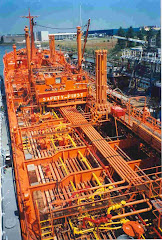This week a glimmer of hope surfaced for Omega Navigation (ONAV) in an article in the Tradewinds, where Aaron Kelley reported the signs of a deal where George Kassiotis puts in an additional US$ 2,6 million equity into the company and the company rolls out a rights offering that would give general unsecured creditors and junior lenders a chance to secure a stake in the reorganised company and has agreed to a cash distribution of 10% to unsecured creditors “over time: provided they accept the plan. Talk of Omega coming out of Chapter 11 with a reorganization plan by November this year.
I have expressed pessimism in the past over Omega, as I saw George Kassiotis’s refuge to Chapter 11 more an defensive act of desperation with his lenders to buy time rather than a serious effort to recapitalize the company. Unlike the successful example of General Maritime (GMR) there was neither any private equity firm ready to provide substantial new funding nor any pre-agreement with senior lenders for a support package. To the contrary, Kassiotis had openly broken with his lenders with a nasty, high profile lawsuit in Piraeus seeking damages.
For Bracewell & Giuliani, Omega’s US attorneys, this was a show case to attract other shipping firms to US bankruptcy court, giving the US legal profession a franchise in maritime bankruptcy. For Jefferies, Omega was a source of badly needed fee-earning business given the collapse of fresh shipping placement deals in capital markets. Hamish Norton, who heads the marine business in Jefferies has a stellar reputation as a knowledgeable and serious investment banker with a high level of integrity and a history of well-structured deals.
Despite this support for Omega, the company financial woes are very challenging with limited room for maneuver. As a smaller listing, Omega lacked the scale of its peers to leverage capital markets and quickly fell behind its peers. The Principal, George Kassiotis, has limited personal wealth from other ventures that he could draw upon to support this Omega. In fact, he seems in an even weaker position than Antonio Zacchello of Marco Polo. All this puts Omega on the same path with a similar fate: move to Chapter 7 liquidation as their senior lenders, HSH Nordbank have already filed for and have been urging.
Meanwhile, whilst Omega has some high powered advisers, they are also some of the highest paid, so there is the specter of mounting costs and legal expenses that are the Achilles Heel in Chapter 11 proceedings. Peter Georgiopoulos had everything in place even before filing in the case of Genmar, to minimize the time and cost in this procedure.
Whilst unquestionably a sign of good faith on the part of Kassiotis, the sum of US$ 2,6 million is a paltry amount for recapitalization of Omega. I am especially intrigued by the rights offering for general unsecured creditors and junior lenders. Is this going to be the main source of funding for company recapitalization along with the sizeable ‘haircut’ to unsecured creditors with promises of the remaining 10% amount paid “over time”? Is not this a sign how bad the situation is?
Who are the largest unsecured creditors? What are liabilities of their advisors Jefferies and legal counsel Bracewell & Giuliani as credtiors. Are unsecured and junior creditors going to be asked to put in new money in this rights issue or will this be a conversion of debt for equity? Why would junior lenders like NIBC and BTMU put more money out on Omega that would in fact benefit HSH Nordbank, who has priority over their position?
Why is not HSH Nordbank sharing the pain in an exchange of debt converted to equity as RBS accepted in their loan restructuring in the case of Eagle Bulk? Would not that give some comfort for a rights offering? Finally who is providing this new restructured senior debt and working capital facility? Has HSH Nordbank changed tack here?
Who are the largest unsecured creditors? What are liabilities of their advisors Jefferies and legal counsel Bracewell & Giuliani as credtiors. Are unsecured and junior creditors going to be asked to put in new money in this rights issue or will this be a conversion of debt for equity? Why would junior lenders like NIBC and BTMU put more money out on Omega that would in fact benefit HSH Nordbank, who has priority over their position?
Why is not HSH Nordbank sharing the pain in an exchange of debt converted to equity as RBS accepted in their loan restructuring in the case of Eagle Bulk? Would not that give some comfort for a rights offering? Finally who is providing this new restructured senior debt and working capital facility? Has HSH Nordbank changed tack here?
Unquestionably, it would appear that Omega has substantial debtor’s leverage here with creditors in serious jeopardy of severe losses for this formula to be workable. Perhaps it is the magnitude of losses that makes them hesitate to move for the dissolution of the company?
Frankly, the Tradewinds article opens more questions than answers. My reaction is that this tentative agreement is likely still fragile. I am troubled that I do not hear anything about a clear and substantial source of recapitalization for Omega to come out of Chapter 11 as a going concern.
Let’s see what happens by November!








